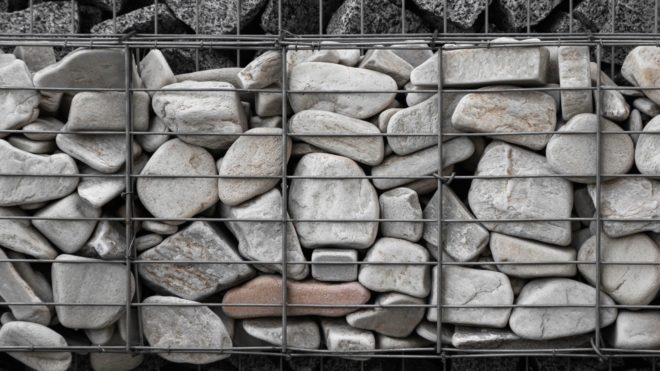Retention wall failure can be caused by a combination of ground pressure, stress, water damage, structural instability, or materials failure. Stone retention walls are popular features of gardens, patios, and terraces. They improve access, enhance aesthetics, and increase the market value of your property.
If you want your stone retention wall to serve their purpose for long periods, avoid these four common mistake:
Inadequate footing
Building a heavy structure on an inadequate footing or weight-bearing structure will cause the wall to crack during storms or chilly winters. The building site must have adequate footing so it can bear the weight and stress of the wall.
- Cement blocks, mortared stones, or concrete walls are rigid and heavy. Their footing should be no less than three times the thickness of the wall.
- If the soil is soft and unstable, a broader and thicker footing is better.
- You must excavate all organic topsoil, boggy or loose soils, and refill it with gravel to increase stability.
- The concrete footings must be steel-reinforced to avoid cracks and vertical failure.
Poor drainage
Without proper drainage to relieve the hydrostatic pressure in the soil, even the best-designed stone retention walls will fail. You must have subsurface drains, gravel shell, outlet points, and weep drains. Position the weep drains at regular intervals, which must be small enough to prevent the formation of water pools. Make sure that your stone retention wall follows the standard requirements. You can also opt for a segmented wall as they are dry-stacked and allow proper drainage.
Low-quality material
Low-quality materials and lack of essential reinforcements are common reasons for wall failure. You must bear in mind the following things to ensure a hard and rigid wall:
- A segmental wall requires a geogrid to keep it firmly grounded.
- A stone wall requires a staggered, sloped arrangement that can withstand decades of wear and tear.
- Don’t select a permeable clay brick where the soil is constantly wet or experiences frequent freeze-thaw cycles.
- Mudstone, soft sandstones, and other natural rocks are not suitable as they have a high probability of crumbling under wet conditions.
- When possible, invest in an experienced landscape contractor for the best results.
Poor construction techniques
Installing blocks, logs, or timbers joints straight-up instead of cutting and staggering them first is a dangerous practice as it introduces weakness into an otherwise sound design. You can avoid it by carefully staggering all joints regardless of the style or type of materials used in construction. It substantially increases the potential strength of the assembly.
About A1 Kevin’s Landscaping
We specialize in residential and commercial landscaping and have been serving the Delaware area for over 30 years. Whether you want an aesthetically pleasing landscape in your lane, a safe space for your pets and kids, or a professional ground around a commercial area, we have got you covered. Get a free quote by calling us at (302) 653-6246, leaving an email at info@a1kevinslandscaping.com, or filling our online contact form.

